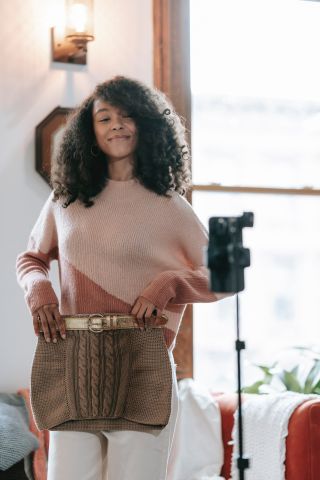
To date, most research on the impact of social media on body image has focused on images of either celebrities (like actresses or models) or peers. Researchers have mostly ignored the breed of semi-celebrities called “influencers,” despite the fact that these individuals play a major role in shaping the content of social media feeds.
Newly published research from Flinders University in Australia tested whether viewing images of Instagram influencers negatively affected women’s mood and body image. The short answer? It does. Especially influencer images that are sexualized (think lingerie and bikini shots).
The term "influencer" was added to official dictionaries just a few years ago. As a testament to the broad reach of influencer culture, several recent surveys found that a shocking number of young people hope to become influencers—ranging from 25 percent in one survey to 54 percent in another. Though influencers are generally selling something—whether it be specific products or the “brand” they’ve created for themselves—the fact that they may seem closer to ordinary people than celebrities can make their sales pitches particularly effective.
Most research on the impact of social media imagery suggests that regardless of whether photos are of celebrities or peers, exposure to these images often increases women’s negative moods and body dissatisfaction. Fashion-focused influencers often use highly sexualized images in order to increase the attention given to their posts. These types of sexualized images can be particularly potent, not just affecting body image but also decreasing perceptions of women’s competence.
In this new study, researchers investigated the effects of viewing content posted by female influencers. They began with a search for the most-followed female Instagram influencers who were not actresses or musicians, and who had at least 1 million followers.
Next, the researchers collected Instagram posts from these influencers. They chose influencers who made both sexualized posts (e.g., posts in which the influencer was wearing lingerie or a bikini, posed in a suggestive manner) and standard fashion-focused images that were not sexualized. All images showed at least three-quarters of the influencer’s body. The researchers also collected posts that showed fashion products like shoes or bags with only a model’s hand or foot visible.
Participants in the study were 230 young women (17-25 years old), most of whom were university students. The study was described as focusing on social media advertising.
Participants were randomly assigned to view one of three sets of images: 1) influencers wearing fashionable attire; 2) sexualized images of influencers; or 3) fashion products that either included no body or showed only influencers’ hands or feet. The images of fashion products served as the control condition. All images were presented in the format of a standard Instagram post. Images were matched so that women saw posts from the same set of influencers regardless of condition.
Before viewing their set of images, participants first completed measures of mood and body dissatisfaction. While they viewed their assigned images, the women rated the quality of each image. After viewing the images, participants again completed the mood and body dissatisfaction measures. Finally, they completed an appearance comparison scale that assessed how much they thought about their own appearance while viewing the images. In order to give the impression that the study was focused on social media advertising instead of body image, the researchers included filler questions about the fashions and products viewed in the images.

Overall, results showed that viewing images of influencers increased women’s negative mood and body dissatisfaction, whereas women who viewed images of products showed slight improvements in mood and body image. The sexualized images of influencers had an even more pronounced negative impact on mood and body satisfaction.
Viewing influencer images also increased women's appearance comparisons. In fact, results suggested that comparing your appearance to the influencers in the images was the likely explanation for why women felt worse after viewing images featuring influencers compared to the control images.
The take-home message from this study is clear and consistent with previous research focusing on social media images of celebrities or peers. If you use social media, consider limiting how often you use it so that you’re exposed to fewer of the types of posts that tend to leave women feeling awful about themselves and their bodies.
Be particularly wary of influencers who use sexualized imagery to get attention and sell products. These types of images may be even more damaging than standard types of fashion-focused images.
It may also be wise to unfollow any accounts—influencer or otherwise—that prompt you to focus on shortcomings in your own appearance. Too often, influencer accounts seem to be influencing girls and young women to hate their own bodies. That alone is a good reason to put down your phone whenever you can, and spend more time with people who care more about who you are than how you look.


